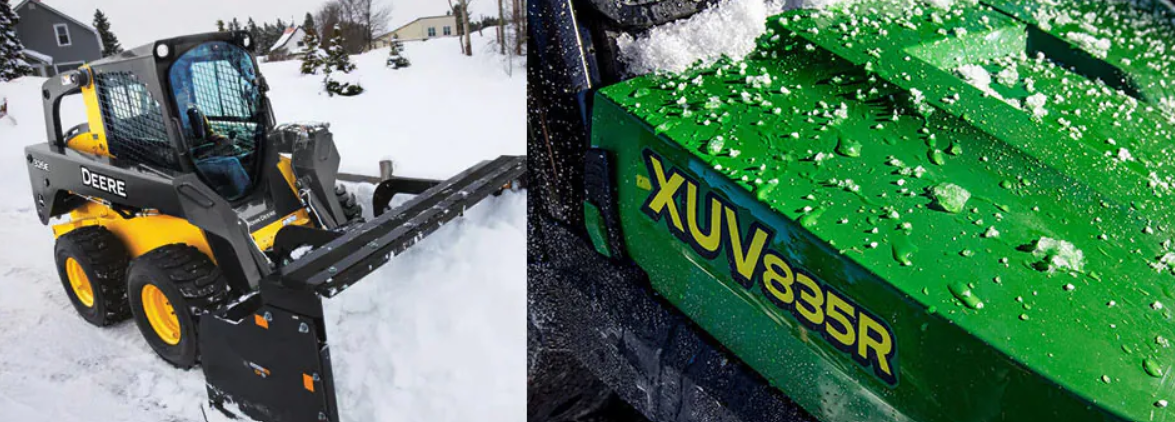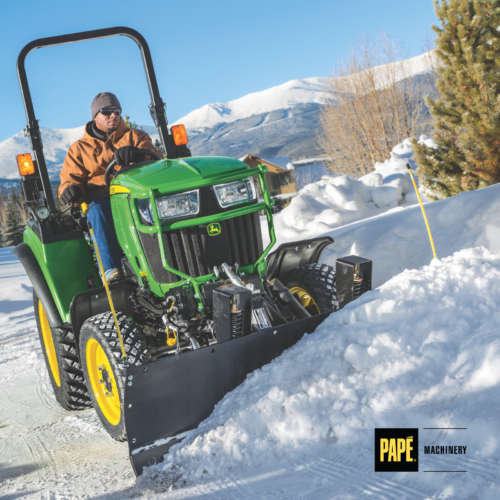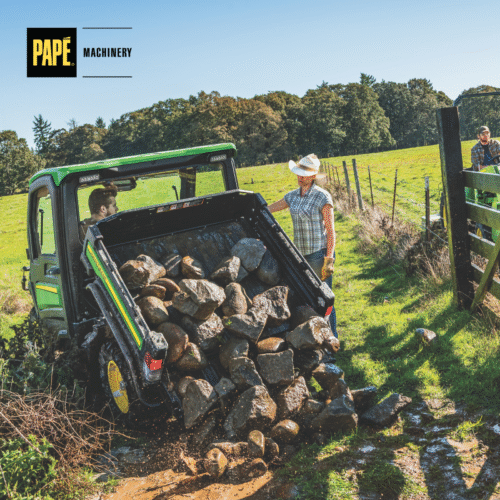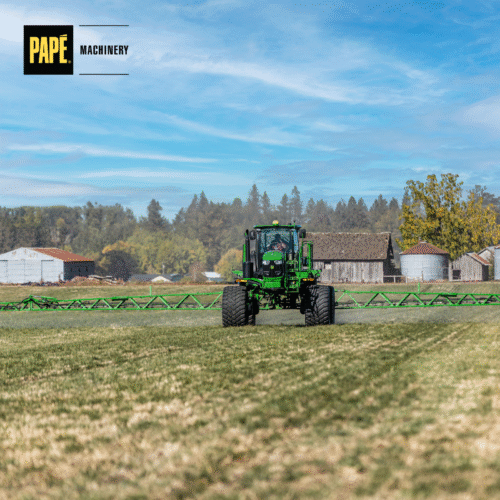The seasons are changing, and the winter weather outlook is looking mighty cold! Daydreaming about putting a new snowblower to work this season, or are you thinking of buying a new compact utility tractor and want to make sure it’s winter-ready? In this edition of the Papé Machinery Agriculture & Turf blog, let’s take a look at how to get your compact utility tractor prepped for winter.
Questions to Consider
As you’re prepping your compact utility tractor for winter, you’ll want to ask yourself a few questions:
- Will you be storing your John Deere tractor outside?
- Does your property get iced over in the winter months?
- Is your property flat, or are there inclines or a steep driveway?
These questions will help guide some of your decisions on the key considerations when it comes to winterizing your compact utility tractor, which include whether to use a block heater, what type of ballast to use, and whether or not to put on tire chains.
Block Heater
Do you need a block heater? John Deere compact utility tractors are designed to work well in colder climates. However, if your tractor is getting stored outside in temperatures that may be 10 or 20 degrees or colder, you’ll definitely want to use a block heater.
Here at Papé Machinery Agriculture & Turf, we put block heaters in all of our tractors. You may want to plug the block heater in all the time, or just overnight. These heaters plug into a standard extension cord easily, and are very inexpensive given the value and the propensity to extend the lifespan of your machinery.
Tire Chains
Do you need tire chains, and if so, where should you place them? For the most part, since all John Deere compact utility tractors have 4WD, you should be okay without chains on your tires. However, if you have more inclines on your property or a steep driveway, you’ll probably want to use chains; you’ll also want to use them even if your property is flat, but gets iced over often.
We recommend only putting tire chains on the back of your John Deere tractor. Now, you can put them in front as well, but you’ll want to be mindful as this may void your warranty. However, frontal tire chains are sometimes necessary if you’re working with a lot of ice.
You can purchase tire chains at the time of purchase or later. Here at Papé Machinery Agriculture & Turf, we are happy to help you install and test tire chains, and provide recommendations about how frontal chains may affect your specific equipment warranty.
Ballast
Ballast: what is it and do you need it? First things first: Yes, no matter what, you’ll need it. Ballast helps with traction and balance, preventing tipping by keeping the backend of your tractor firmly planted.
Now that you know you’ll need it, you want to decide what type of ballast to go for. There are 3 types:
- Liquid ballast
- Ballast box
- Mechanical ballast
A liquid ballast goes into the tires, adding significant weight to the back of the tractor. The ballast box hangs off the back of the tractor, adding extra weight with sand, rock, or bricks. A mechanical ballast includes putting steel-wheel weights on the rear end.
We generally discourage the ballast box, as it’s a bit cumbersome and gets in the way of using your rear implements, making switching out rear implements time consuming.
Liquid ballast is easy and versatile. You’ll want to be mindful of the type of liquid you use, though. We generally recommend Bio-Ballast or Rim Guard, as these won’t freeze and won’t corrode.
You won’t need to add ballast to the front of the tractor, as your loader will add plenty of weight. Focus on adding balance and weight to the back.
Happy Holidays!
We hope everyone enjoys a wonderful holiday season and a great winter ahead! Here at Papé Machinery Agriculture & Turf, we’re here to help you with any questions you may have. Call or visit us today to ask us about how to best prepare your John Deere tractor for the winter ahead.







